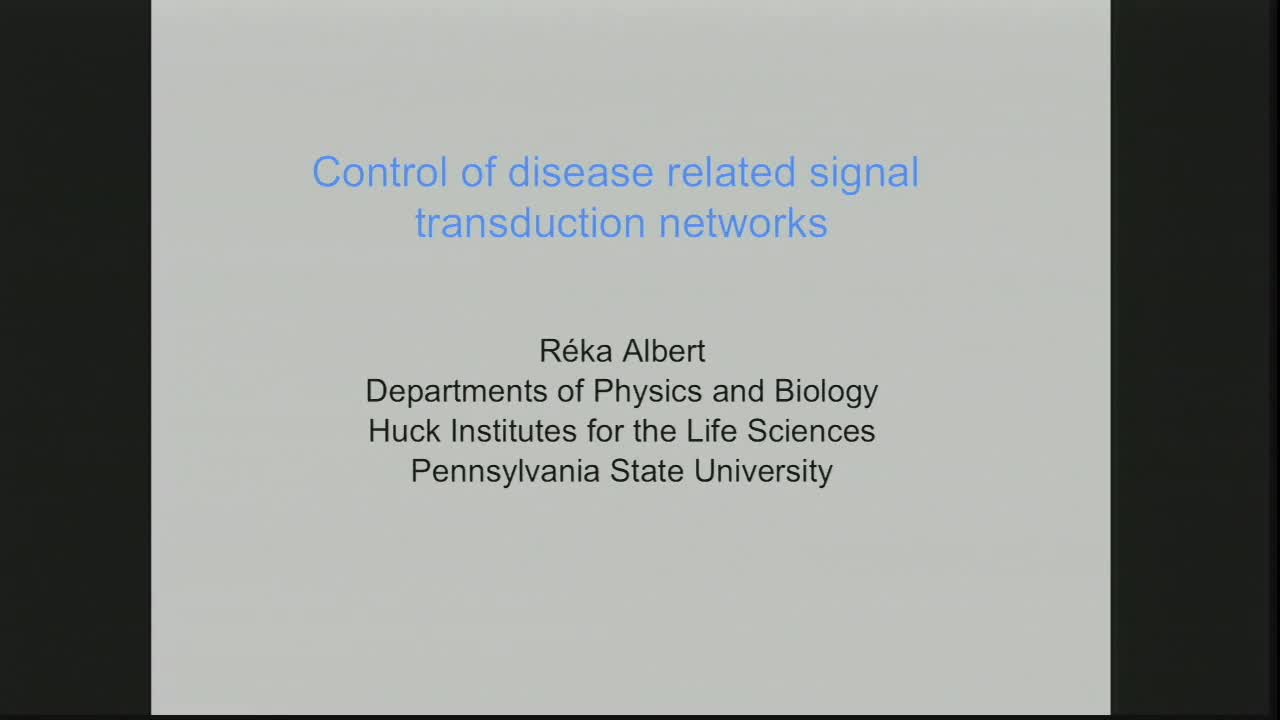Control of Disease-related Signal Transduction Networks
Presenter
November 17, 2015
Keywords:
- signal transduction network, mitigating dysregulations, therapeutic target prediction
Abstract
Mutations or alterations in the expression of elements of cellular signaling networks can lead to incorrect behavioral decisions that could result in tumor development or the promotion of cell migration and metastasis. Thus, mitigation of the cascading effects of such dysregulations is an important control objective.
My group at Penn State is collaborating with wet-bench biologists to develop and validate predictive models of various biological systems. Over the years we found that discrete dynamic modeling is very useful in molding qualitative interaction information into a predictive model. The dynamic repertoire of these models can be directly related to the real system’s outcomes. The models can be used to systematically probe the effect of manipulating the nodes and edges of the network. We have identified a number of potential therapeutic strategies in T cell large granular lymphocyte leukemia and in liver cancer, several of which were validated experimentally. While our early results involved a systematic consideration of potential manipulations, we recently developed an efficient method to predict manipulations that can stabilize or block certain outcomes. This method is based on an integration of the signal transduction network and the regulatory logic into an expanded network, and the identification of specific strongly connected components of this expanded network.
